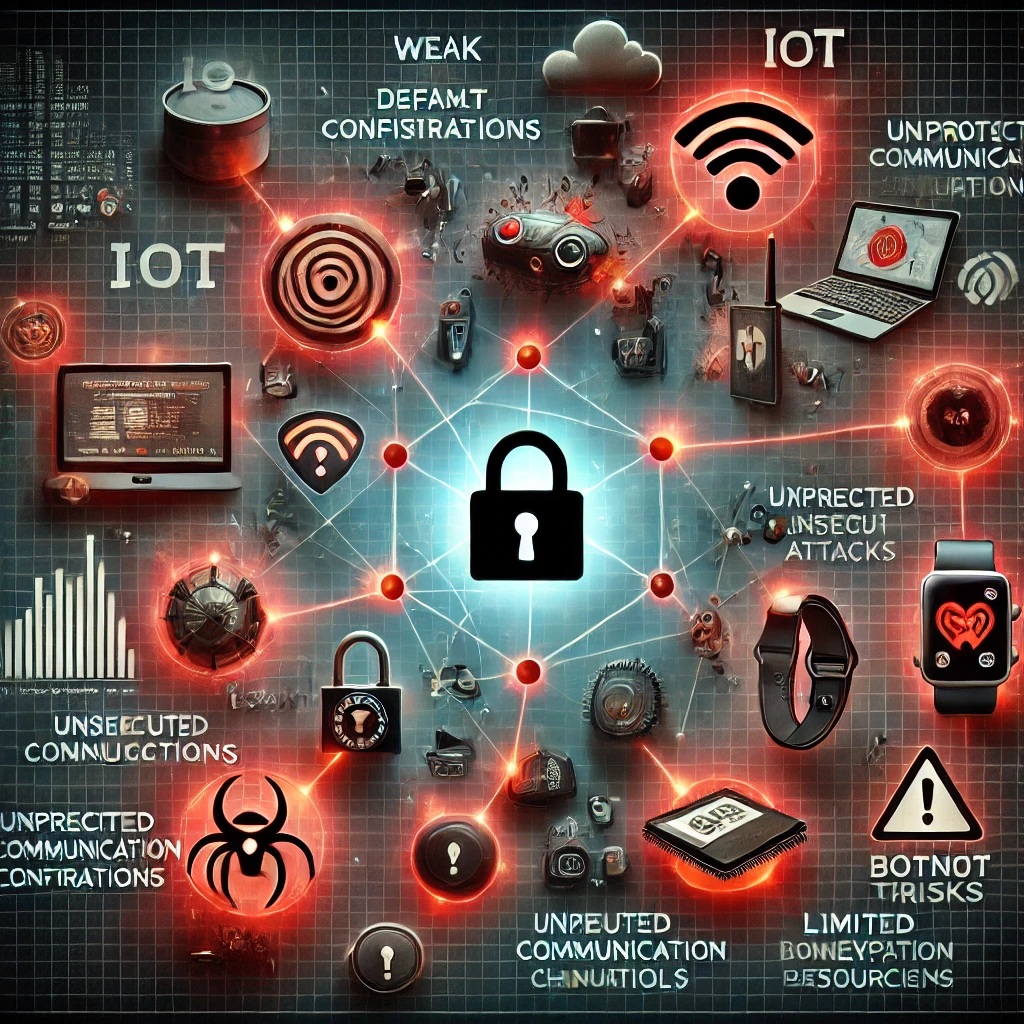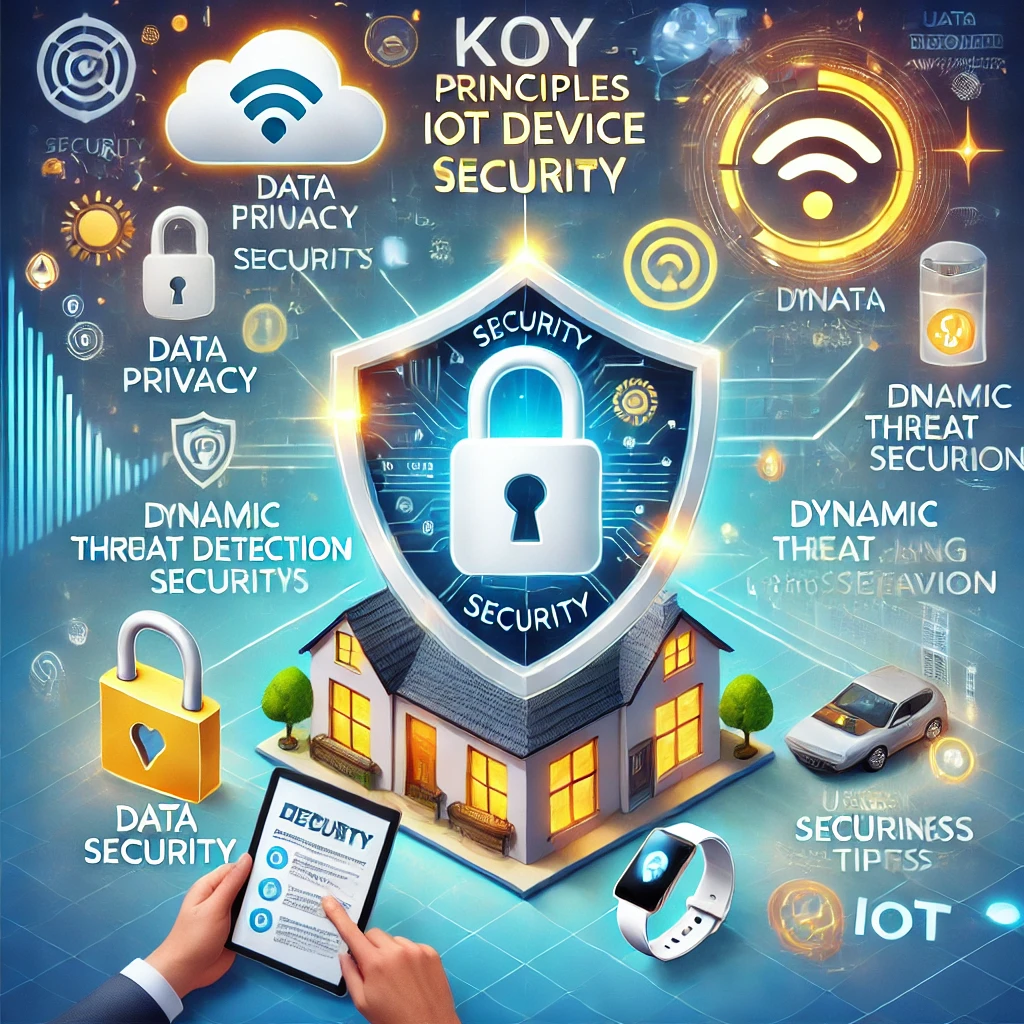Introduction: The Growing Need for IoT Security
The IoT landscape is expanding rapidly, connecting billions of devices across homes, industries, and cities. While IoT devices bring convenience and innovation, they also present unprecedented security challenges. With cyberattacks targeting these devices on the rise, knowing how to secure IoT devices is essential. This blog explores new strategies and technologies for securing IoT ecosystems in 2024. Written for Aknitech Automation, this guide provides insights for businesses and individuals alike.
Understanding the Risks of IoT Vulnerabilities
1. Weak Default Configurations
IoT devices often ship with weak or default credentials, leaving them susceptible to brute force attacks.
2. Unprotected Communication Channels
Many devices lack encryption, exposing sensitive data transmitted over networks.

3. Limited Device Resources
Due to their low power and processing capabilities, IoT devices are often unable to run robust security protocols.
4. Botnet Threats
Compromised devices can be used as part of a botnet to launch Distributed Denial-of-Service (DDoS) attacks.
Key Principles for IoT Device Security
1. Device-Centric Security
- Equip devices with built-in security features during the manufacturing stage.
- Enable secure boot and tamper-proof hardware to protect against unauthorized changes.
2. Data Privacy by Design
- Implement data minimization techniques to collect only the necessary information.
- Encrypt all stored and transmitted data to prevent unauthorized access.

3. Dynamic Threat Detection
- Use machine learning and AI to monitor device behavior and detect anomalies in real-time.
4. User Awareness and Education
- Train users to recognize phishing attempts and follow secure practices, such as changing default passwords.
Advanced Methods to Secure IoT Devices
1. Edge Security Enhancements
With more data processed at the edge, securing edge computing devices is critical.
- Use Cases: Autonomous vehicles, industrial machinery, and smart city infrastructure.
- Solution: Implement local firewalls and AI-driven analytics to mitigate risks.
2. Hardware Root of Trust (RoT)
- Secure IoT devices from the hardware level up by embedding RoT technology.
- Example: RoT ensures that only verified software can run on the device, preventing malware execution.
3. Zero Trust for IoT
- Apply zero-trust principles to limit device access strictly to what is necessary.
- Features: Continuous identity verification and restricted permissions.
4. Blockchain for IoT Integrity
- Blockchain creates tamper-proof records of device interactions, ensuring transparency and trust.
- Use Case: Supply chain management, where secure data sharing is critical.
Practical Steps to Implement IoT Security
1. Segregate Networks
- Create isolated networks for IoT devices to limit the scope of attacks.
- Use firewalls to separate IoT devices from critical IT infrastructure.
2. Regular Security Audits
- Perform routine security assessments to identify and patch vulnerabilities.
- Utilize vulnerability scanners designed specifically for IoT ecosystems.
3. Adopt Secure Firmware Management
- Automate firmware updates to ensure devices always run the latest security patches.
4. Use Encrypted Communication Protocols
- Enable protocols like MQTT with TLS to secure communication between devices and servers.
5. Device Discovery and Inventory
- Continuously monitor and log all connected devices to maintain visibility.
Emerging Technologies in IoT Security
1. Post-Quantum Cryptography
- Protect IoT devices against threats posed by quantum computing advancements.
- Why It Matters: Ensures long-term security as quantum technologies mature.
2. AI-Powered Security Solutions
- Machine learning algorithms analyze network traffic for suspicious patterns.
- Example: AI-driven intrusion detection systems (IDS) for IoT networks.
3. 5G Security Integration
- Leverage 5G’s enhanced security features to secure IoT devices connected via cellular networks.
Real-World Applications
1. Healthcare
IoT devices like wearables and smart medical equipment must comply with stringent regulations to protect patient data.
2. Manufacturing
Industrial IoT (IIoT) devices on factory floors need robust segmentation and monitoring to avoid production disruptions.

3. Smart Homes
Consumer IoT devices, from smart locks to voice assistants, require strong encryption and secure authentication to prevent unauthorized access.
4. Agriculture
IoT in smart farming uses sensors for monitoring crops and livestock. These sensors need secure communication to ensure accurate data analysis.
The Future of IoT Security
1. Unified IoT Security Standards
Standardized frameworks for IoT security, like the NIST Cybersecurity Framework, will gain wider adoption.
2. Collaborative Ecosystems
Manufacturers, cloud providers, and security firms will collaborate more closely to deliver integrated security solutions.
3. Self-Healing Devices
IoT devices equipped with AI could autonomously detect and patch vulnerabilities without human intervention.
Conclusion
Securing IoT devices is a multi-faceted challenge requiring a blend of robust technology, proactive monitoring, and user awareness. By implementing advanced strategies like zero trust, blockchain, and AI-driven security, organizations can fortify their IoT ecosystems against emerging threats. As IoT adoption continues to rise in 2024 and beyond, staying ahead in security is crucial for operational success and trustworthiness.
Aknitech Automation is committed to helping businesses secure their IoT devices with cutting-edge solutions and expert guidance. Invest in comprehensive IoT security strategies with Aknitech Automation to safeguard your connected future.







